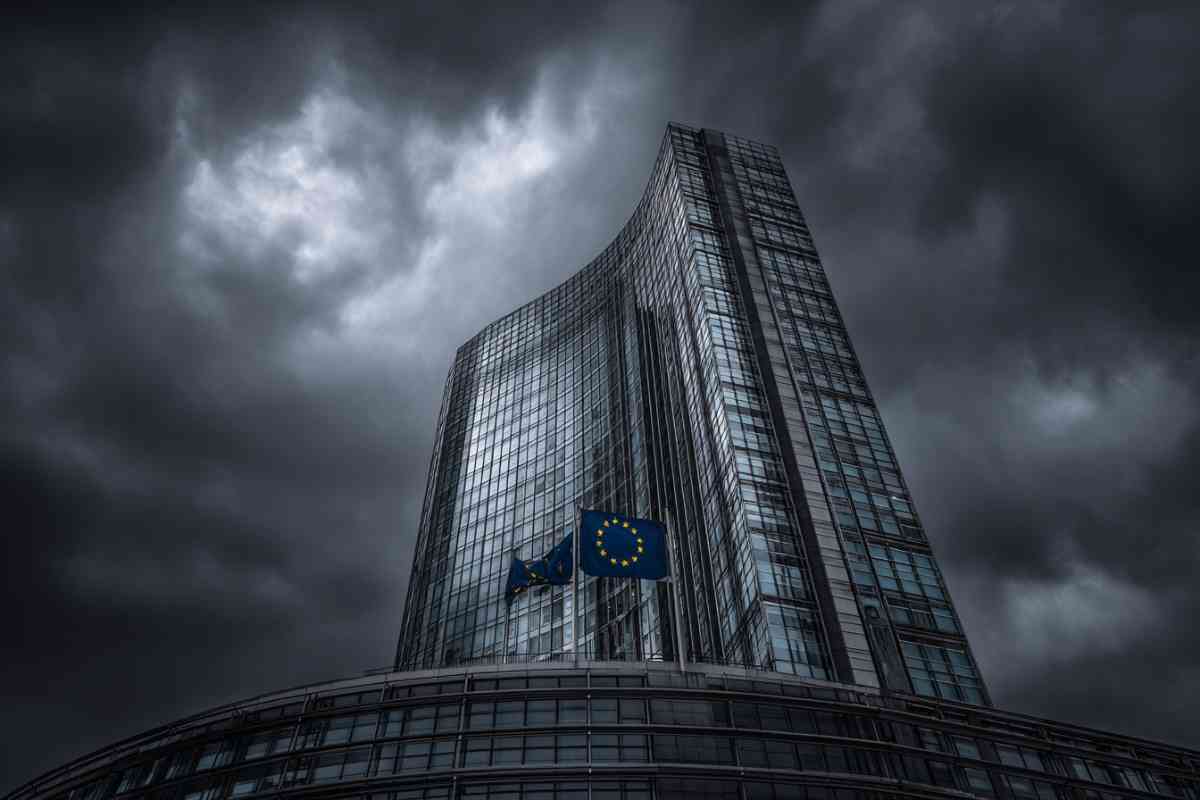The questionable practices of the European Investment Bank: a shadow giant under scrutiny

The European Investment Bank (EIB) is often hailed as the EU’s financial engine for progress. It funds infrastructure, green projects, and economic cohesion programs across Europe and beyond. However, beneath its polished image lies an institution that raises serious questions about transparency, accountability, and the legitimacy of its activities. With a balance sheet exceeding €500 billion in 2023, the EIB is not just a bank but a major political and financial actor , one that operates largely out of public view.
What is the EIB?
Origins and mandate
The EIB was founded in 1958 under the Treaty of Rome, with the aim of financing projects that promote European integration, infrastructure, and economic development (European Investment Bank – Financial Report 2023, EIB). Over time, its role expanded from infrastructure projects like roads and bridges to funding climate policies, renewable energy, and research.
Today, the EIB operates as the world’s largest multilateral lender, outpacing even the World Bank in annual disbursements. It provides loans, guarantees, and equity investments not only in the EU but also in developing countries, often serving as a geopolitical tool for Brussels.
Ownership and governance
The bank is owned by EU member states, which collectively provide its capital. Despite this public ownership, the EIB operates as a hybrid institution: formally public, yet structured to behave like a private financial entity. Decisions are made by its Board of Governors and Board of Directors, dominated by representatives from member states and the European Commission.
This governance model creates an inherent conflict. While the EIB claims independence, it is deeply tied to EU political priorities, often acting as an enforcer of the European Commission’s economic agenda (The European Investment Bank: Development, Integration, Investment, Palgrave Macmillan).
Lack of transparency and democratic control
Opaque decision-making
One of the most persistent criticisms of the EIB is its lack of transparency. While the bank manages enormous sums of public money, its internal decision-making processes are shielded from public scrutiny. Even the European Parliament, which represents EU citizens, has only limited oversight powers (Lack of transparency at the EIB, Counter Balance).
Meeting minutes and key investment decisions are often not publicly available, or are published with redactions. Citizens cannot easily find out how or why certain projects receive funding. This lack of clarity is particularly concerning given the bank’s role in shaping entire sectors such as energy, transport, and technology.
Weak accountability
Unlike commercial banks, the EIB faces little pressure from shareholders or the market. Nor is it subject to the same regulatory supervision as national banks. The European Court of Auditors has repeatedly highlighted weaknesses in the EIB’s reporting and auditing mechanisms, warning that project outcomes are not always properly assessed (Special Report: The European Investment Bank’s External Lending Mandate, European Court of Auditors).
Political agenda disguised as investment
Green Deal as a political tool
The EIB presents itself as the “EU climate bank,” pledging to align its operations with the European Green Deal and climate targets. While environmental goals are popular and seemingly well-intentioned, they also provide a convenient justification for channeling vast public resources into projects with limited democratic debate.
For example, the EIB has committed to ending financing for fossil fuel projects. However, it continues to fund “transition projects” that include natural gas pipelines and liquefied natural gas (LNG) terminals, which critics argue contradict its climate commitments (Greenwashing at the European Investment Bank, Bankwatch).
Policy enforcement during crises
The EIB is not just a financial institution , it has acted as a political enforcer. During the eurozone crisis, the bank played a key role in imposing EU-approved austerity measures on Southern European countries. Projects in Greece, Spain, and Portugal were tied to fiscal reforms that aligned with Brussels’ neoliberal agenda, creating resentment and raising questions about sovereignty (Public Risk, Private Profit – The EIB Model, Counter Balance).
Scandals and conflicts of interest
Revolving doors
The EIB has a history of close ties with EU political elites and major corporations. Former EU officials often transition into senior roles at the bank, creating a revolving-door system that undermines impartiality (Revolving Doors and the EIB, Corporate Europe Observatory).
A notable example involves Werner Hoyer, the EIB’s long-serving president, who has faced criticism for fostering a corporate culture that prioritizes political connections over public interest. Critics argue that such appointments create an insider network of policymakers and bankers who reinforce each other’s interests.
Controversial projects
The EIB’s funding decisions have sparked several controversies. For instance, the bank financed the Trans Adriatic Pipeline (TAP), a project widely criticized for its environmental and social impacts. Despite public opposition and expert warnings about its long-term viability, the EIB provided billions in financing, illustrating its willingness to back projects that contradict EU climate rhetoric (The TAP project: A risky bet, Bankwatch).
Similarly, the bank has been accused of funding companies with poor human rights records or questionable business practices, particularly in developing countries where oversight is weaker.
Green façade, grey reality
Greenwashing accusations
While the EIB claims to be leading the fight against climate change, many of its funded projects are accused of greenwashing. The bank has financed large-scale biomass plants, industrial agriculture, and transport infrastructure that experts say have negative environmental impacts despite being labeled “green” investments (Greenwashing at the European Investment Bank, Bankwatch).
In some cases, companies receiving EIB loans have previously been fined for environmental violations. This raises questions about whether the bank’s sustainability criteria are strict enough, or merely a way to burnish its image.
The push for “green bonds”
The EIB has also been a pioneer in issuing green bonds , debt instruments meant to finance environmentally friendly projects. While this sounds promising, critics argue that the definition of “green” is too vague, allowing almost any project to be labeled as such. This not only misleads investors but also dilutes the credibility of genuine sustainable initiatives.
Public funds and taxpayer risks
Socializing risks, privatizing profits
Another structural problem with the EIB is the way it socializes risks while privatizing profits. The bank provides loans with low interest rates, guaranteed by EU member states. If a project fails, taxpayers ultimately bear the burden, but when it succeeds, profits often flow to private corporations (Public Risk, Private Profit – The EIB Model, Counter Balance).
This dynamic has been criticized in sectors such as renewable energy, where the EIB funds large projects led by multinational corporations. Instead of benefiting local communities, these projects often enrich foreign shareholders while European taxpayers shoulder the financial risks.
Lack of public debate
Most citizens are unaware of the EIB’s activities, let alone their financial implications. The bank operates in the background of EU policymaking, avoiding public debate and scrutiny. Yet its decisions have a direct impact on energy prices, infrastructure development, and even the EU’s geopolitical strategies.
Expansion beyond Europe
Geopolitical ambitions
The EIB has expanded far beyond the borders of the EU, financing projects in Africa, Asia, and Latin America. While this is often presented as “development assistance,” it also serves EU geopolitical interests by securing resources, markets, and influence. Critics argue that these loans can resemble forms of neocolonialism, as they often impose conditions on recipient countries (Europe’s Shadow Bank: How the EIB Shapes Global Policy, Counter Balance).
Poor track record abroad
The bank’s activities in developing countries have been marred by allegations of funding projects linked to land grabs, forced displacement, or labor abuses. This is especially concerning given that oversight is far weaker outside the EU, increasing the risk of corruption and mismanagement.
Why the EIB’s model is flawed
Overconcentration of power
The EIB’s model gives enormous power to a small circle of technocrats, policymakers, and corporate partners. There is little room for citizen participation, independent review, or democratic oversight. In essence, the bank operates as a shadow institution that wields both financial and political power without sufficient checks and balances.
Lack of performance evaluation
While the EIB often boasts about its lending volumes and the number of projects financed, it provides limited information on long-term results. Are these projects truly improving living standards, reducing emissions, or creating sustainable growth? Independent audits suggest that the answer is often unclear (Special Report on the EIB’s Performance Measurement, European Court of Auditors).
Conclusion: time for reform and accountability
The European Investment Bank is a financial behemoth that operates in the shadows of Brussels. It claims to serve European citizens but often prioritizes political agendas, corporate profits, and superficial green narratives. Its lack of transparency, susceptibility to conflicts of interest, and tendency to socialize risks while privatizing profits make it deeply questionable as a public institution.
Without fundamental reforms, such as stronger parliamentary oversight, mandatory transparency for all projects, and stricter sustainability criteria, the EIB will continue to function as a tool for the elite rather than for the people of Europe.
Key points summarized
- The EIB manages over €500 billion with minimal democratic control.
- It acts as both a financial institution and a political enforcer.
- Its green agenda is often criticized as greenwashing.
- Taxpayers bear the risks while private corporations enjoy the profits.
- The bank’s global expansion raises ethical and geopolitical concerns.


















